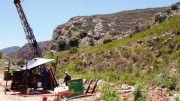Three months after Peter Munk’s retirement from Barrick Gold, we’re already getting a look at the post-Munk Barrick, and the picture is volatile and a little strange.
While former Goldman Sachs executive John Thornton took the reins from Munk as executive chairman only three months ago (the two had served as co-chairmen during the two-year transition), Barrick shareholders got a taste of the drama to come with the nasty, public breakdown of a proposed merger between Barrick and Newmont Mining only days before the Barrick annual meeting on April 30. Newmont management even took the unusual step of singling out and publicly blaming Thornton and his lack of “respect” for Newmont as the reason the deal wasn’t consummated.
If there’s been one signature trait to Barrick over the past decade, it’s been that if you’re a project or executive that’s being praised to high heaven by top management in public presentations or annual meetings, there’s a decent chance that two or three years down the road the project will be shelved or downgraded (e.g., Pascua-Lama, Lumwana), or the person squeezed out (e.g., Randall Oliphant, Aaron Regent).
And so it is with Jamie Sokalsky, who was praised by Munk in his final appearance as chairman at an annual meeting as personifying and leading the best management team the company has ever had. Tellingly, Munk went even further and described his recruitment of Thornton as the “best investment I’ve ever made at Barrick, including Goldstrike.”
Three months later, Thornton has showed his hand by getting Sokalsky to step down as president and CEO, effective mid-September, after little more than two years in the top roles. A 21-year Barrick veteran and an accountant by training, Sokalsky is widely credited with having ably guided the company through two of the worst years in its corporate history, cleaning up multi-billion dollar messes left behind by previous management teams.
Nothing too unusual there by the standards of corporate Canada, but the strangeness comes in the form of the remaining corporate structure: Barrick has left the CEO position empty and internally appointed two co-presidents: lawyer Kelvin Dushnisky, who was formerly senior executive vice-president responsible for corporate and government affairs, and chairman of African Barrick Gold; and Jim Gowans, formerly Barrick’s executive vice-president and COO, and a long-time De Beers executive in Canada and southern Africa. It’s a management structure that is doomed for a short life, like an unstable isotope.
Additionally, Barrick CFO Ammar Al-Joundi was promoted to senior executive vice-president and CFO, and Darian Rich becomes executive vice-president of talent management — a newly created position in the wake of years of cutbacks, layoffs and declining employee morale in the company.
In many ways the latest management shake-up carries on the style of the Munk days: an imperious move from one man at the top, with little input from shareholders and directors in the background. Shareholders in mining companies are content enough with this approach when the company is making money, but when fortunes turn to the negative, this governance style can lead to resentment and unrest.
The management shake-up is prompting speculation that the merger talks with Newmont are back on the table, though Barrick’s diminished financial strength and Thornton’s continued presence make a hostile takeover or friendly merger unlikely.
In media interviews after the latest management changes, Thornton insisted he would not personally take on the CEO role, and hinted at more changes to come.
Given the pace of events at Barrick in the past few months, we don’t doubt him.





Be the first to comment on "Editorial: Barrick goes CEO-less, doubles down on presidents"